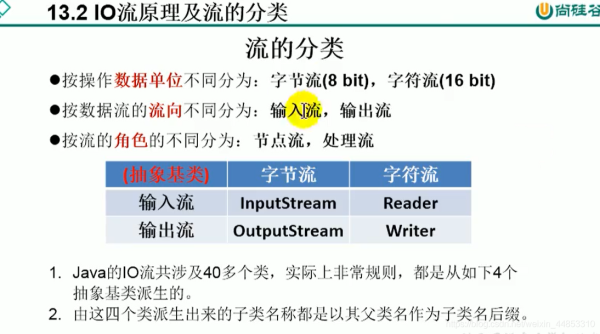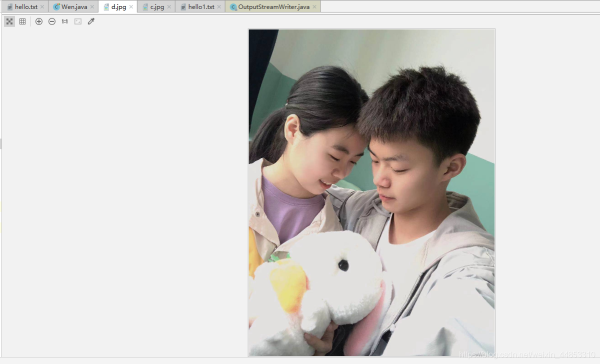淺談Java中File文件的創建以及讀寫
@Test public void test6() throws IOException {File file1 = new File('C:IDEAh1.txt');if(!file1.exists()){//文件不存在 file1.createNewFile(); System.out.println('創建成功');}else{//文件存在 file1.delete(); System.out.println('刪除成功');} }
輸出


file.mkdir,不會幫你創建上層目錄 file.mkdirs,會幫你創建上層目錄
@Test public void test7(){//創建文件夾,mkdir,不會幫你創建上層目錄File file1 = new File('c:IDEAio2');boolean mkdir =file1.mkdir();if(mkdir){ System.out.println('創建成功1');} //創建文件夾,mkdirs,會幫你創建上層目錄File file2 = new File('c:IDEAio1io3');boolean mkdirs =file2.mkdirs();if(mkdirs){ System.out.println('創建成功2');} }
輸出



@Test public void test8(){//刪除文件或空文件夾File file1 = new File('c:IDEAh1.txt'); file1.delete(); }5.遞歸刪除所有文件(包括子文件)
//遞歸函數刪除所有文件 private boolean deletedir(File dir){if (dir.isDirectory()) { File[] files = dir.listFiles(); //遞歸刪除目錄中的子目錄下 for (File f:files) {boolean success = deletedir(f);if (!success) { return false;} }}// 目錄此時為空,可以刪除return dir.delete(); } @Test public void test8() {File dir = new File('c:IDEA');System.out.println(deletedir(dir)); }

1.對于文本文件(.txt,.java,.c,.cpp),使用字符流處理
2.對于非文本文件(.jpg,.mp3,.mp4,.avi,.doc,.ppt)使用字節流處理
6.讀取txt文件內容,流操作要用try-catch(字符流)@Testpublic void test9() { FileReader fr = null;//自動補的 try {//1.實例化File類的對象,指明要操作的文件File file1 = new File('c:IDEAhello.txt');file1.createNewFile();//要拋出異常//2.提供具體的流fr = new FileReader(file1);//3.數據的讀入//read():返回讀入的一個字符,如果達到文件末尾,返回-1int data = fr.read();while(data!=-1){ System.out.print((char)data); data = fr.read();} } catch (IOException e) {e.printStackTrace(); }finally {try { //4.流的關閉操作 if(fr!=null)//防止沒有實例化成功,避免空指針異常fr.close();} catch (IOException e) { e.printStackTrace();} }

要記得關閉,因為物理連接JVM垃圾回收機制不會自動回收,要手動關閉。
7.讀取文件內容升級方法(字符流)@Test public void test1() {FileReader fr = null;try { //1.File類的實例化 File file = new File('hello.txt'); //2.FileReader流的實例化 fr = new FileReader(file); //3.讀入的操作 //read(char[] cbuf):返回每次讀入cbuf數組中的字符的個數。如果達到文件末尾,返回-1 char[] cbuf = new char[5]; int len; while ((len = fr.read(cbuf)) != -1) {//錯誤的寫法//for(int i=0;i<cbuf.length;i++{// System.out.println(cbuf[i]);//} //正確的寫法for (int i = 0; i < len; i++) { System.out.println(cbuf[i]);} }} catch (IOException e) { e.printStackTrace();} finally { if (fr != null)try { //4.資源的關閉 fr.close();} catch (IOException e) { e.printStackTrace();}} }

@Test public void test2() throws IOException{//File對應的硬盤中的文件// 如果不存在,在輸出的過程中,會自動創建此文件//1.提供File類的對象,指明寫出到的文件FileWriter fw = null;try { File file = new File('hello.txt'); //2.提供FileWriter的對象,用于數據的寫出 //FileWriter(file,append)第二個參數,append是true則在后面添加,是false就覆蓋 fw = new FileWriter(file,true); //3.寫出的操作 fw.write('I have a dream!'); fw.write('you need have a dream');} catch (IOException e) { e.printStackTrace();} finally { try {if(fw!=null)//4.流資源的關閉fw.close(); } catch (IOException e) {e.printStackTrace(); }}}

@Test public void test3(){FileReader fr = null;FileWriter fw = null;try { // 1.創建File類的對象,指明讀入和寫出的文件 File src = new File('hello.txt'); File des = new File('hello1.txt'); // 2.創建輸入輸出流的對象 fr = new FileReader(src); fw = new FileWriter(des,true);//不覆蓋 // 3.數據的讀入和寫出操作 char[] cbuf = new char[5]; int len; while((len = fr.read(cbuf))!=-1){//每次寫出len個字符fw.write(cbuf,0,len);//從cbuf的0號位開始寫入len個字符 }} catch (IOException e) { e.printStackTrace();} finally { try {// 4.關閉流資源1fw.close(); } catch (IOException e) {e.printStackTrace(); } try {// 4.關閉流資源2fr.close(); } catch (IOException e) {e.printStackTrace(); }} }

@Test public void test4(){FileInputStream fis=null;FileOutputStream fos=null;try { //1.造文件 File src = new File('b.jpg'); File des = new File('c.jpg'); //2.造流 fis = new FileInputStream(src); fos = new FileOutputStream(des); //3.讀數據,存數據 byte[] buffer = new byte[5]; int len;//記錄每次讀取的字節的個數 while((len = fis.read(buffer))!=-1){fos.write(buffer,0,len); }} catch (IOException e) { e.printStackTrace();} finally { if(fos!=null) {try { //4.關閉資源 fos.close();} catch (IOException e) { e.printStackTrace();} } if(fis!=null) {try { //4.關閉資源 fis.close();} catch (IOException e) { e.printStackTrace();} }} }

@Test public void test5(){BufferedInputStream bis = null;BufferedOutputStream bos = null;try { //1.造文件 File src = new File('b.jpg'); File des = new File('d.jpg'); //2.造流 //2.1造節點流 FileInputStream fis = new FileInputStream(src); FileOutputStream fos = new FileOutputStream(des); //2.2造緩沖流 bis = new BufferedInputStream(fis); bos = new BufferedOutputStream(fos); //3.復制的細節:讀取,寫入 byte[] buffer =new byte[10]; int len; while((len=bis.read(buffer))!=-1){bos.write(buffer,0,len); }} catch (IOException e) { e.printStackTrace();} finally { //4.資源關閉 //要求,先關閉外層的流,再關閉內層的流 if(bos!=null){try { bos.close();} catch (IOException e) { e.printStackTrace();} } if(bis!=null){try { bis.close();} catch (IOException e) { e.printStackTrace();} } //說明:關閉外層流的同時,內層自動關閉,所以外層關閉可以省略 //fos.close(); //fis.close();} }

用緩沖流快了很多

經典步驟:
1.創建File類的對象,指明讀入和寫出的文件
2.創建輸入輸出流的對象
3.數據的讀入和寫出操作
4.關閉流資源
到此這篇關于淺談Java中File文件的創建以及讀寫的文章就介紹到這了,更多相關Java中File文件的創建及讀寫內容請搜索好吧啦網以前的文章或繼續瀏覽下面的相關文章希望大家以后多多支持好吧啦網!
相關文章:

 網公網安備
網公網安備